Small Town Museum Surprises
Discovering surprises and hidden gems in small town museums
World-famous museums are often on our list of things to see when we travel, even if museum-going isn’t otherwise a regular event for us. We may also visit respected but lesser-known museums in cities along our way. But we often drive by the museums in villages and small towns without a second glance or even knowing they are there.
You might think small-town museums hold appeal mostly for those with family or personal connections in the area. It is true some content may mean more to locals than strangers. I enjoyed exhibits in the museum of the small town I grew up in, Morris, Manitoba, that others might not be as interested in: my uncle’s curling sweater, an article about my brother, and my own name in an old school register. But much of what I saw held a broader appeal. Entire room layouts, photographs, articles, and other exhibits provided glimpses into the history and personality of the area. (By the way Morris is about half-way between Winnipeg and the U.S. border along the main highway.)
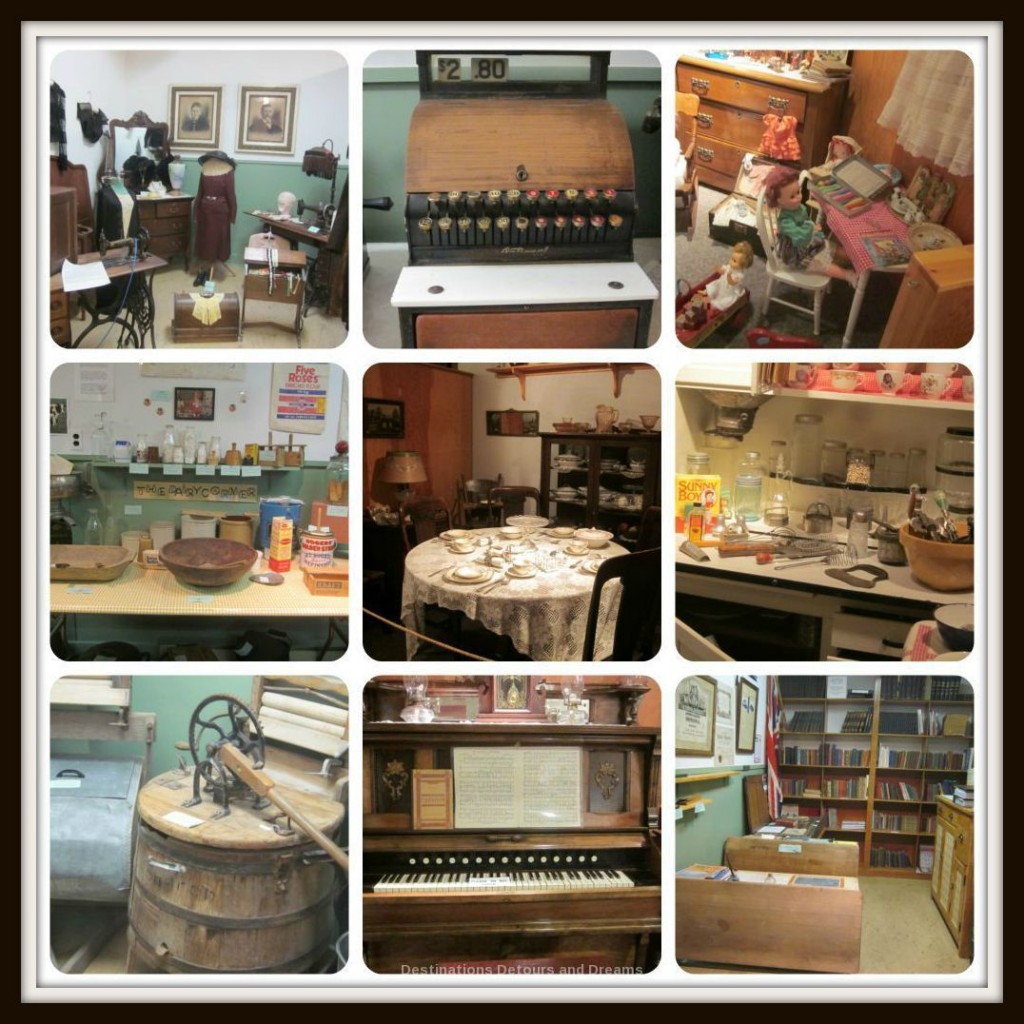
My experience at the Morris Museum prompted curiosity and interest in other small town museums. St. Joseph is a small Francophone community of approximately two hundred people located in southern Manitoba. It seems an unlikely spot to find a reconstructed heritage village with restored buildings and an agricultural museum with exhibits of tractors and other agricultural machinery, one of the largest collections of stationary machinery in the Canadian West. The museum had its beginnings with Jean-Louis and Marie-Laure Perron, who collected artifacts representing the history and lives of the pioneers of the Red River Valley. Due to museum construction and my own time constraints, I did not tour the agricultural portion of this museum, but was impressed with the rest of what I saw.
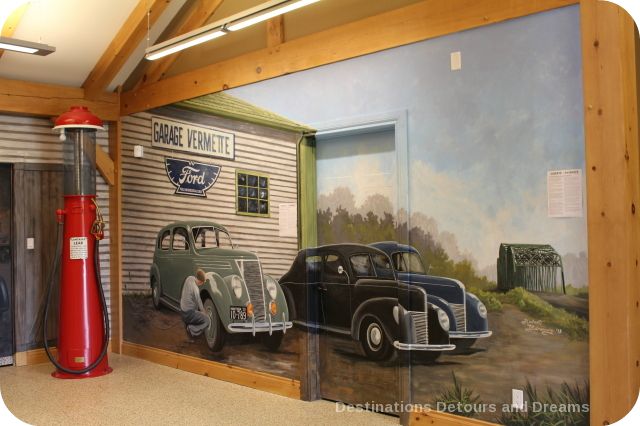
A variety of exhibits are contained within a large, new timber-frame museum building. Murals by Manitoba artist Hubert Théroux depict historical scenes from the area.
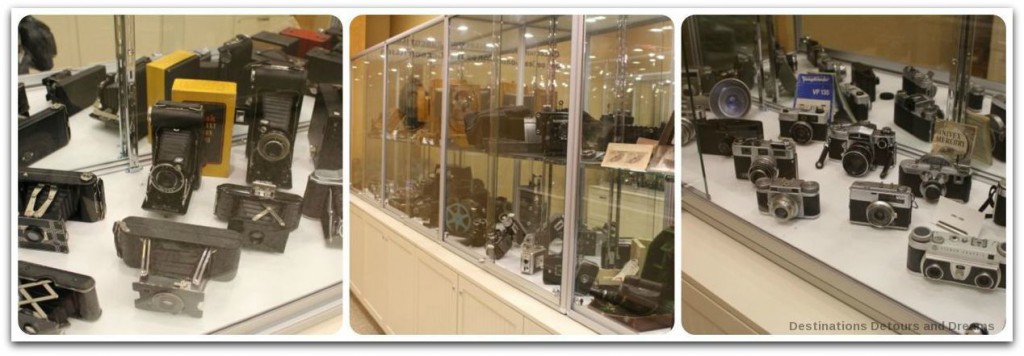
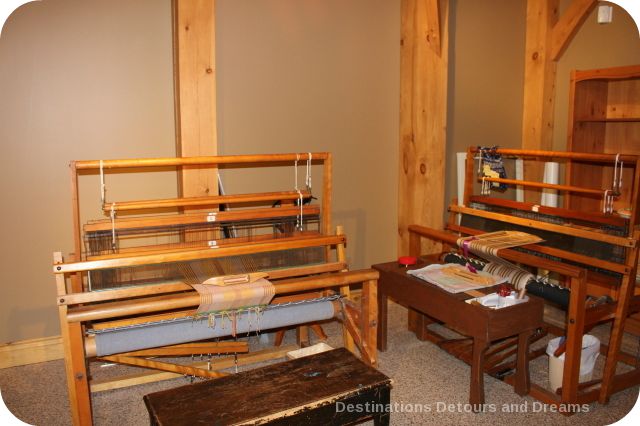
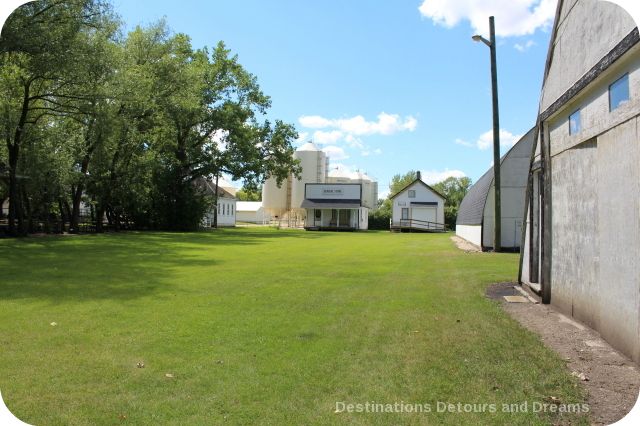
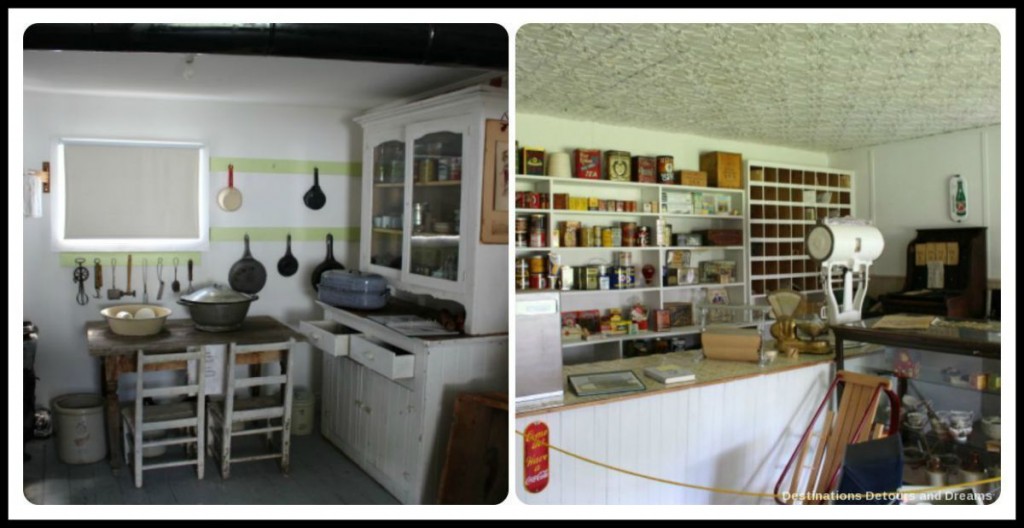
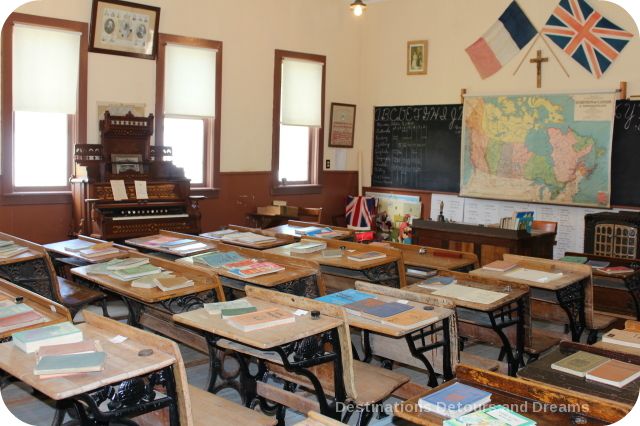
There is no school in St. Joseph anymore, but when the guide took me inside the restored one-room school house, she told me there are still people in town who recall school days when teaching in French was not allowed in public schools. However, schools in many rural Francophone communities did offer instruction in French, telling students to put away their French books when inspectors were coming. This started to change in the 1970s. Today, there is a Français school division providing instruction entirely in French to Franco-Manitobans and many French Immersion schools offering instruction in French to students whose mother tongue is not French.
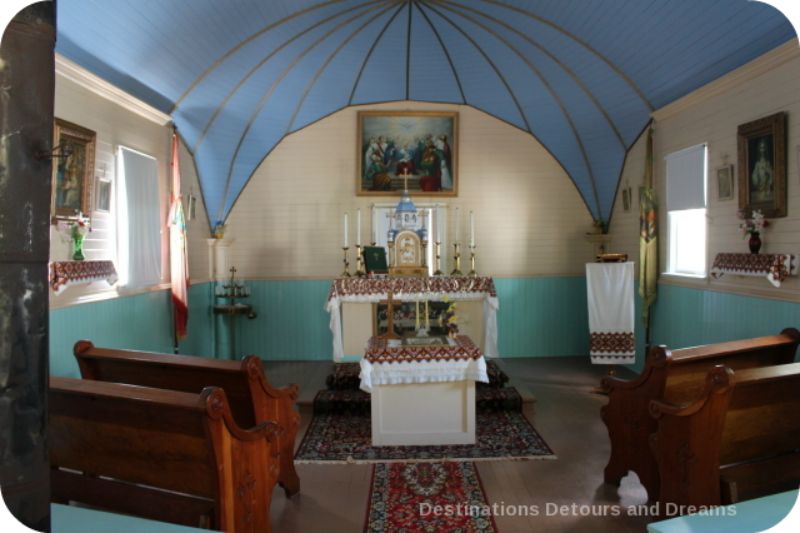
When the Plankey Plains Ukrainian Catholic Church closed, the wood-stove heated church, built in 1938, was moved to the St. Joseph Heritage Village. The museum board felt it was appropriate to sit alongside the Francophone history as it reflected the nature of the broader community.
In addition to the restored buildings, a hall contains other displays.
Here is a sample.
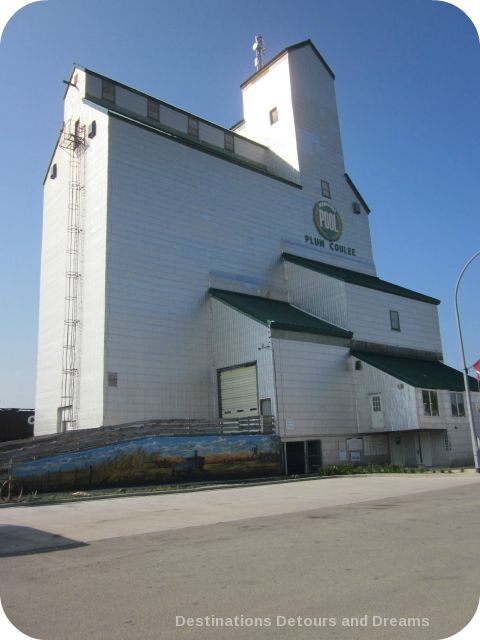
Sometimes the museum building itself is part of the history and display. The museum in Miami, Manitoba is in a an old railway station. The museum in Plum Coulee, Manitoba, a town of about 850 people, is located inside an old wood grain elevator. Elevators such as this one, designed to receive, store, and ship grain, were once a prairie icon. The traditional elevators have been disappearing since the 1990s, replaced with concrete high-capacity terminals. I’ve not had opportunity yet to visit the inside of either the Miami or Plum Coulee Museums. I did tour a museum in Okotoks, Alberta housed in a stately home built in 1905. Over the years, it was home to several prominent families.
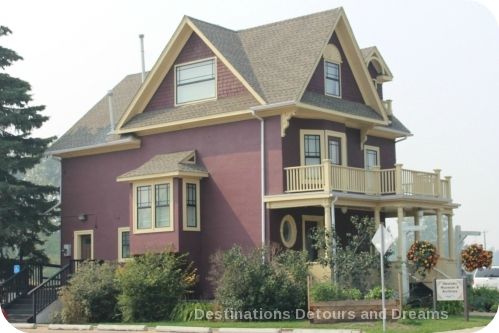
Okotoks is a growing community of around twenty-eight thousand people. It is eighteen kilometres south of Calgary. Today’s population includes a number of people who commute to Calgary for work. The town dates back to the late 1800s. A community built up around a sawmill. The surrounding area was largely agricultural. A significant part of the Okotoks Museum highlights that agricultural history.
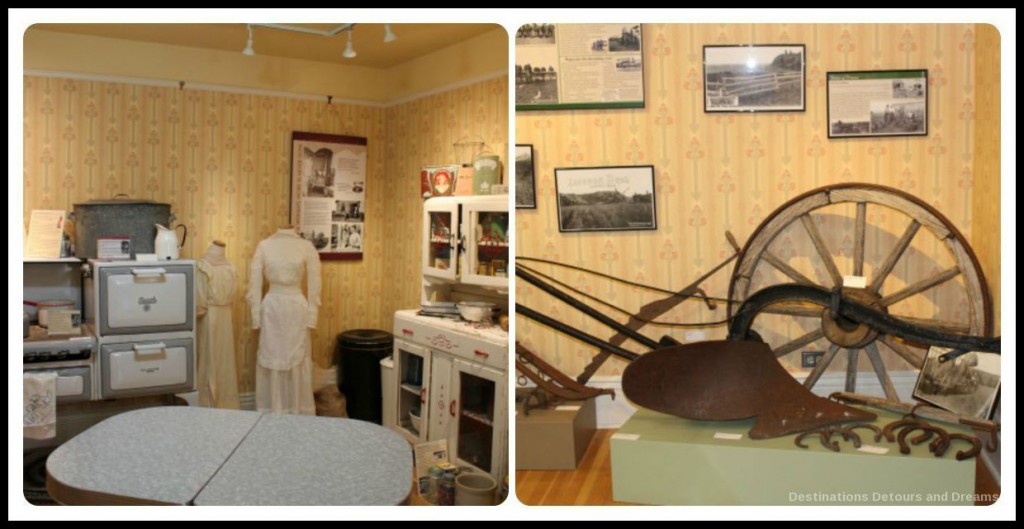
Small-town museums are often managed and run by volunteers. The guides, paid or volunteer, are usually passionate about their town’s history and provide fascinating tidbits of information. Admission is generally low, sometimes free. The next time you are about to pass by a small town, you might want to consider stopping in and checking out its museum. However, be advised there may be limited open hours, due to reliance on volunteers and limited funds. Some are seasonal. Most museums in small towns in Manitoba, for example, are only open during summer months.
Have you come across interesting (and perhaps surprising) small-town museums?
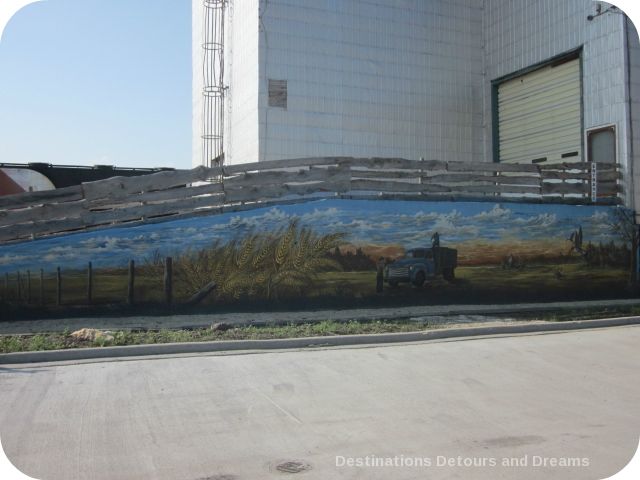
If you enjoyed this post, sign up for Destinations Detours and Dreams monthly e-newsletter. Get behind the scenes information and sneak peeks ahead in addition to a recap of the month’s posts.

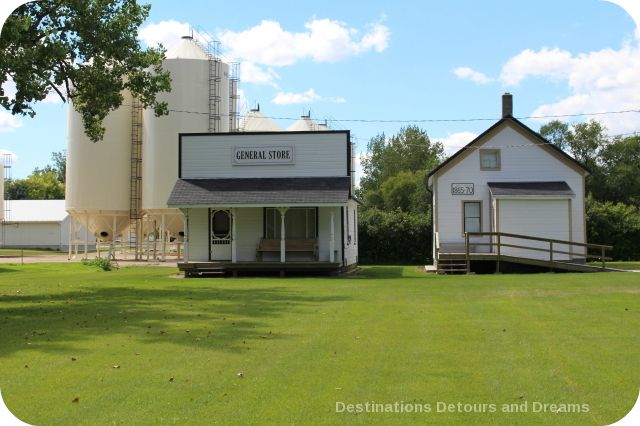
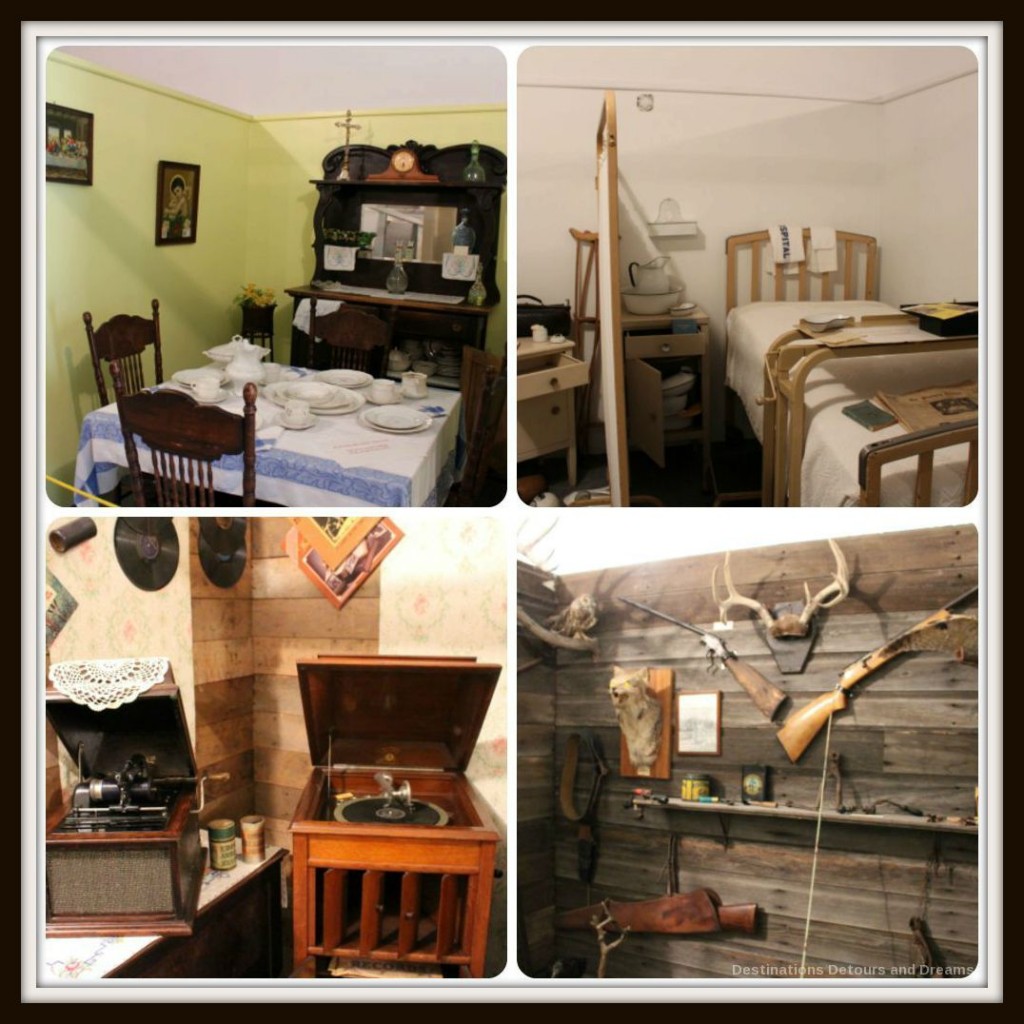
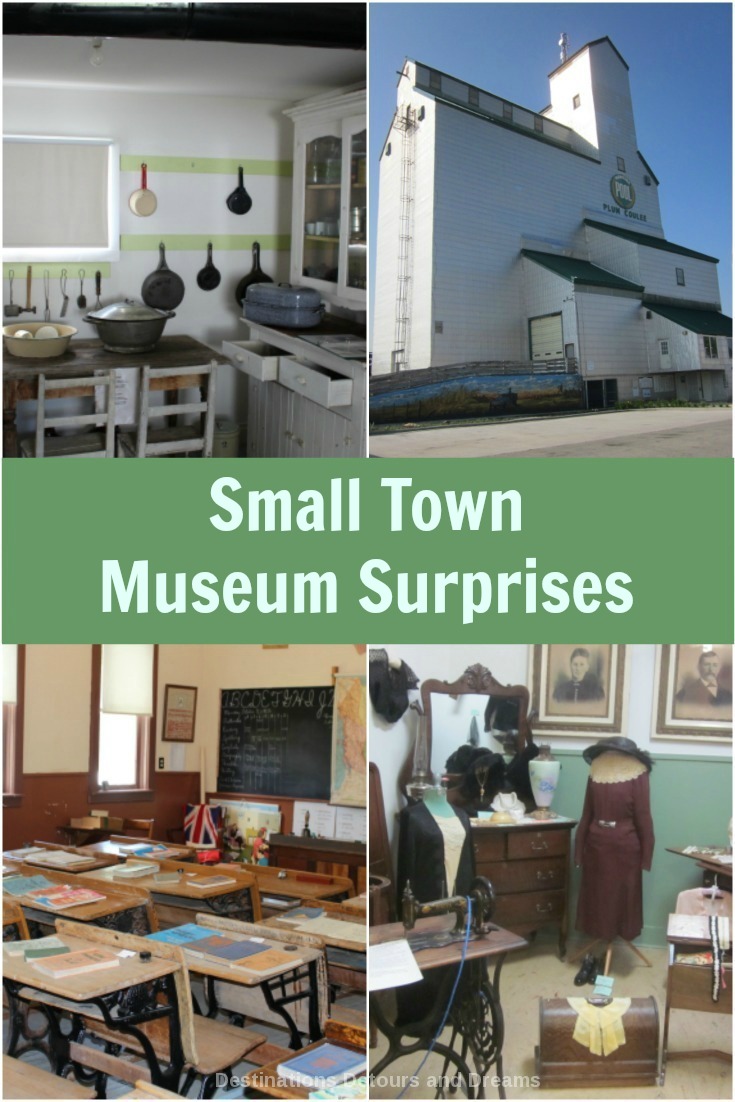
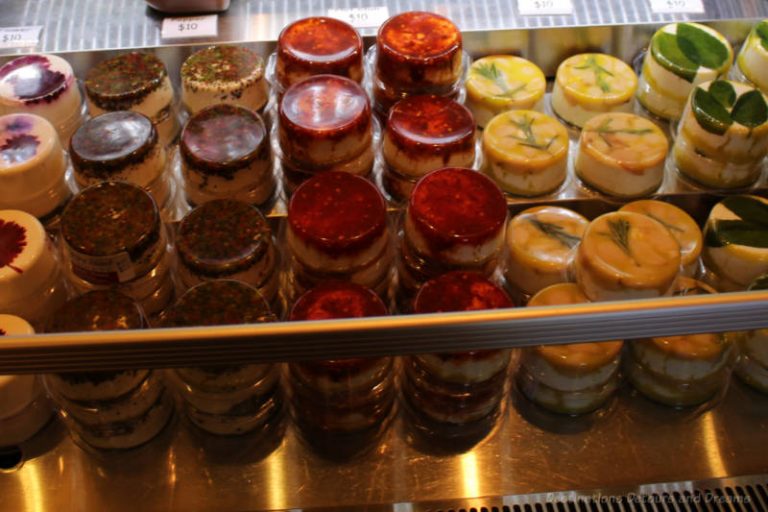
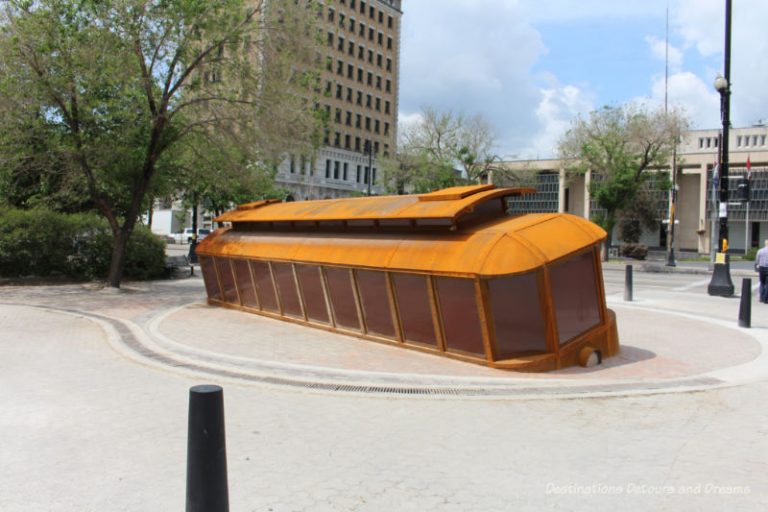
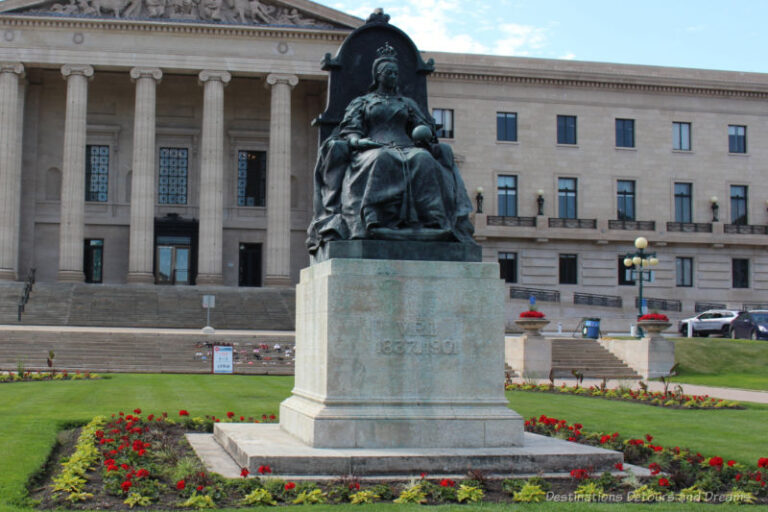
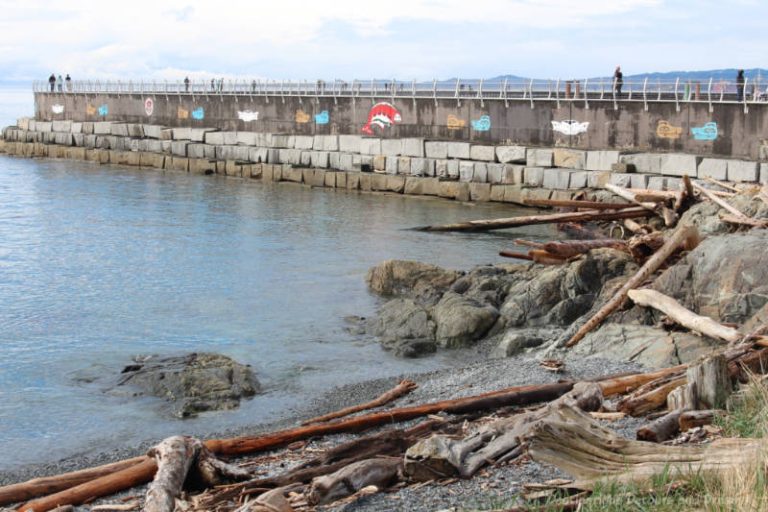

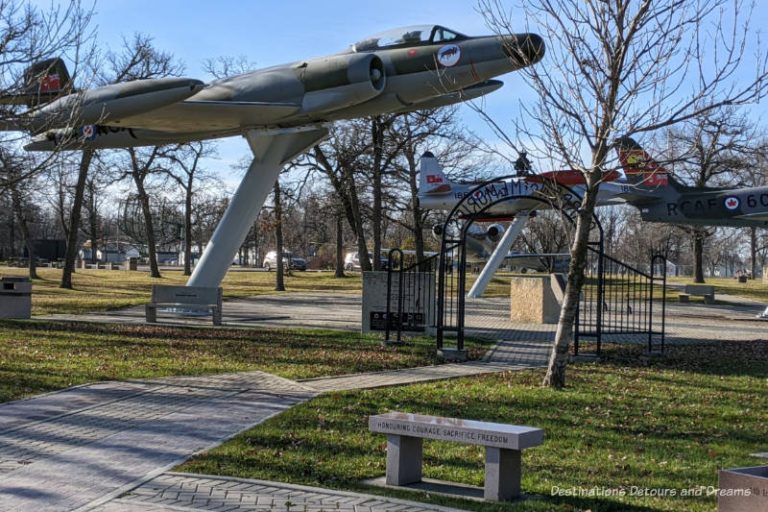
This is a good tip. You are so right. I have passed so many of these small town museumso and not stopped. I think you changed my mind.
Next time I will
Jacquie, I have mostly bypassed small town museums too, mistakenly thinking there wouldn’t be much there to see. I’m learning they often contain a lot of things of interest.
The best museum I have ever visited was the Prinsenhof Museum in Delft, Netherlands. I ducked in to get out of the rain, had low expectations and was blown away. The most innovative, interactive experience I’ve ever had at a museum. Even compared with the large, splashy ones in big cities. Never underestimate the small town museum.
Deb, I will remember the Prinsenhof Museum and check it out when I get to the Netherlands. I agree you should not underestimate the small town museum.
We love small town museums. Recently we visited Jimmy Carter’s boyhood home (complete with an old well and bucket shower) in Plains, Georgia which gave us some insight into the man he became. Many museums, like the ones you pictured in your post, offer glimpses of life in a by-gone era, with homes and other buildings furnished with what are now antique or vintage furniture and accessories. Each display has a story to tell and It’s easy to picture the day-to-day interactions between clerks, customers and family members. Anita
Anita, I agree that small town museums often make it easy to picture day-to-day life in a gone-by era. There are often lots of personal stories. The Jimmy Carter boyhood home sounds interesting.
I love the mural that you featured.
I’ve had pretty good experiences in small town museums. I think they tend to be interesting because they focus on something so specific so you really get to learn about one area or one subject in detail. I live in a big city so we don’t have any small museums here. But I’ve enjoyed quite a few while on vacation and they’ve all left lasting impressions.
Erica, there are still a number of small museums left in the city I live in, focused on one of the areas within the city or a specific person. They are interesting because of their local focus.
How nice to preserve the small church and classroom—it must feel like walking back in time. I was totally impressed that your family is embedded in a museum exhibit, too! Fascinating post on small town museums—especially for me a big city girl!
Thanks Irene. The church and classroom were very well preserved. I could easily imagine school or a church service starting.
.I must admit I am guilty of going to just famous huge museums. But small town museums may give us a more personal account of an area’s history, being kept by volunteer, therefore loving, hands like the well-kept Morris Museum! Maybe I should start with my Mom’s hometown in Rosario,, Batangas Philippines! Or find one in my former Kent, Washington and our now current Mesa, Arizona!
Carol, museums with which you have a personal connection or history would be a great start.
Donna, as roadtrippers, we always enjoy discovering unexpected local museums along our route. Your photos reminded me of so many we have visited in the past. The Dubois County Museum in Jasper, Indiana, has a great collection of local historical artifacts. We have visited several railroad depot museums, but I have never been to a museum in a grain elevator. We will have to put the Plum Coulee Museum on our bucket list!
Howard, old railroad depots seem to be used a lot as museums or tourism offices. I think it might be because the railway often played such an important part in a town’s history. I will remember the Dubois museum for when I pass through Jasper, Indiana.
I’m always fascinated by who settled in these small towns in North America, as the history is actually very recent and yet can be swiftly lost. Small town museums often have the best examples of daily life rather than just a history of battles, etc.
Wendy, the examples of daily life are what make these small museums most appealing to me.
Love this post Donna! We have several small museums on Maui and they are wonderful! In fact the one in Lahaina has the oldest printing press in the U.S.! I always try to get off the beaten path so thanks for sharing these lovely images – especially like that mural.
Thank Marquita. It’s interesting to discover what gems these small museums have – like the oldest printing press.
Just saw this. What a great perspective –museums that offer a travelogue through time, maps to help us make sense of what we see today.
Sydney, I like viewing these as maps to help us make sense of what we see today. Nice description.
I am also a fan of small town museums. In the eastern and midwestern U.S. there are many former industrial towns in which the industry as long since fled but the remains make for an interesting museum, some of which are housed in the old industrial buildings. In the west you will also come across museums in gold-rush towns.
Ken, I find it interesting when buildings no longer used for their original purpose are turned into museums. The building becomes part of the museum exhibits.
I’ve come across a lot of interesting small museums, particularly where they are the vision of one individual, giving them a unique perspective. I particularly like the ones in old or interesting buildings – I’d love to visit that one in Okotoks.
Karen, I too like museums in interesting buildings. And it is nice to come across different perspectives.
This is a big part of why we love to travel on the back roads. So many gems to be discovered in small towns. We have stumbled upon tons of cool museums and attractions in small towns all across the world.
Veronica, it’s extra special to come across one of these small town gems when you weren’t expecting it.
OK, this is rare (and shouldn’t be) but I am officially ashamed of myself! I live in a small town and have been here two + years and have not yet gone through the local museum. You have inspire me to finally do so! Thanks.
Kay, I hope you enjoy your local museum. Maybe you’ll discover something new about your town.
Your museum posts are always filled with so much wonderful information, we really enjoy them.
Thanks. I’m happy to hear you’re enjoying my museum posts.